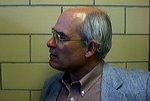All science depends on instrumentation to some degree. As we note in chapter 1, Galileo used his telescope to discover data which he later incorporated into his theorizing. Another early pioneer was Robert Hooke. Like Galileo, he refined an instrument and then used it to discover new things. In Hooke's case the instrument was the microscope.
In 1665, Hooke published Micrographia, a book devoted to displaying many of the images he saw using his microscope. Hooke discovered and named cells and looked at ordinary, small objects under magnification for the first time. A recent article in TheScientist.com describes Hooke's research further and links to a display of 17th century microscopes.
In psychology too, instrumentation plays a big role, both historically and currently. The Web page, Brass Instrument Psychology, from the University of Toronto displays many instruments from early psychology in several categories: optical, auditory, and timing.
Another excellent source of historical instruments in psychology is The Archives of American Psychology at the University of Akron. The page displays a long list of categories that are linked to descriptions and pictures of the instruments.
Today, many of the devices used to measure behavior are computerized. Also, the Internet itself along with other networked devices (cell phones and pagers) are being used. Look up "psychological instruments" on Google and you will find mostly links to paper-and-paper "instruments" used to collect data.
Psychologists are well-embedded in one of science's oldest traditions, the use of instruments to reveal truths about the world.
Subscribe to:
Post Comments (Atom)



No comments:
Post a Comment